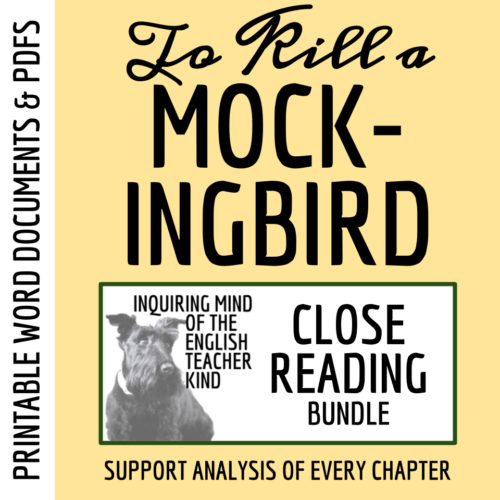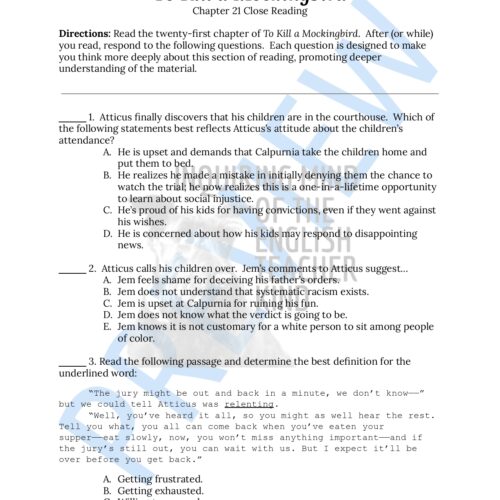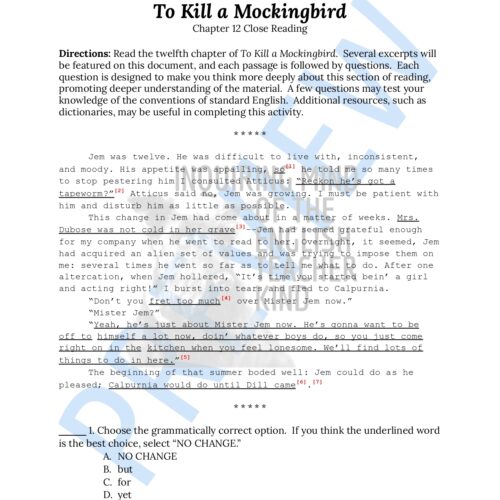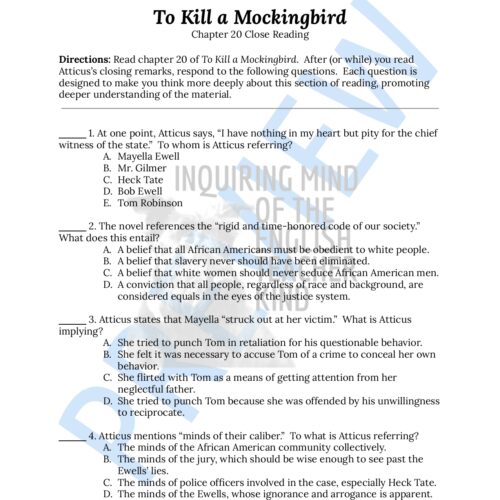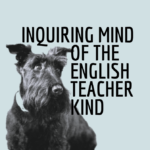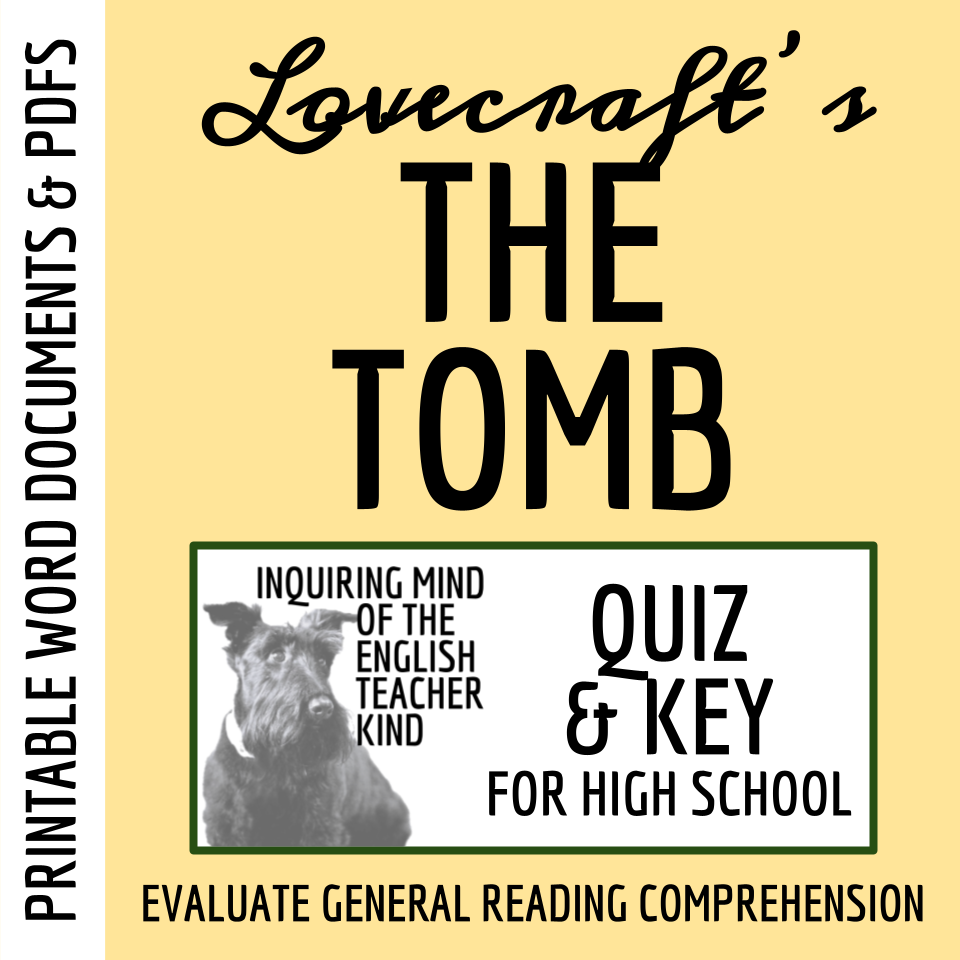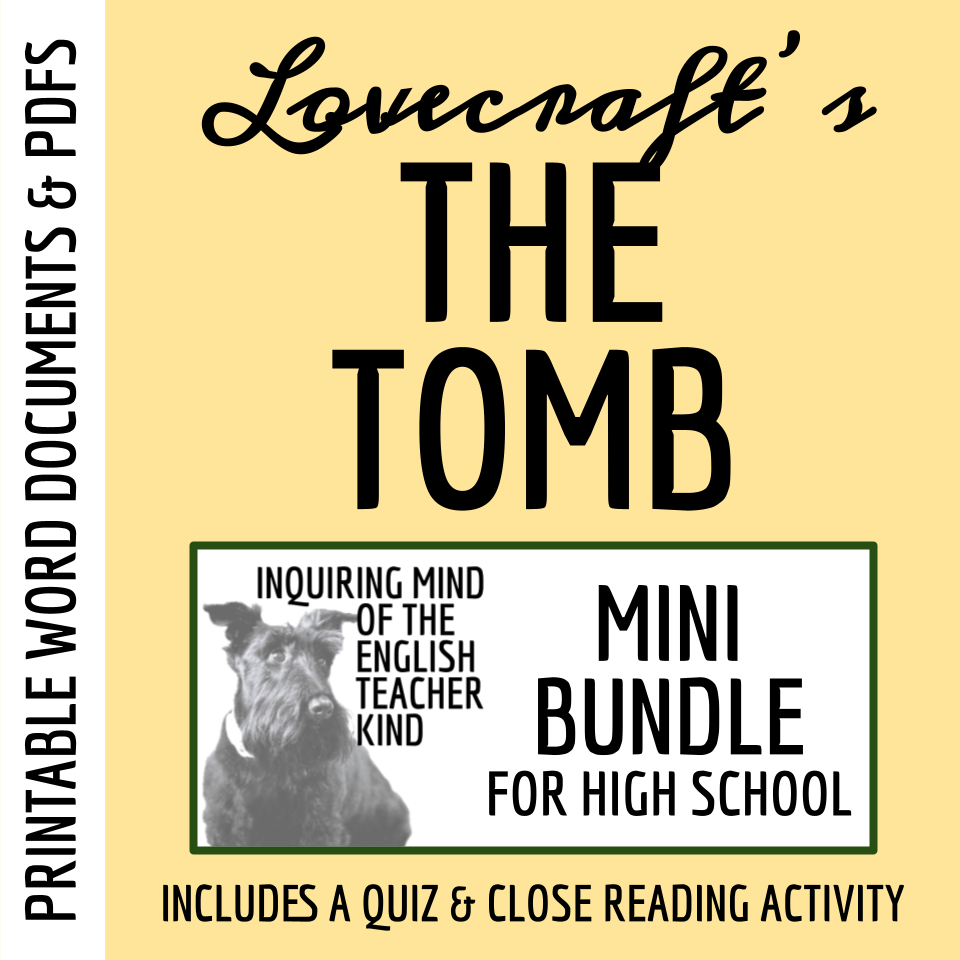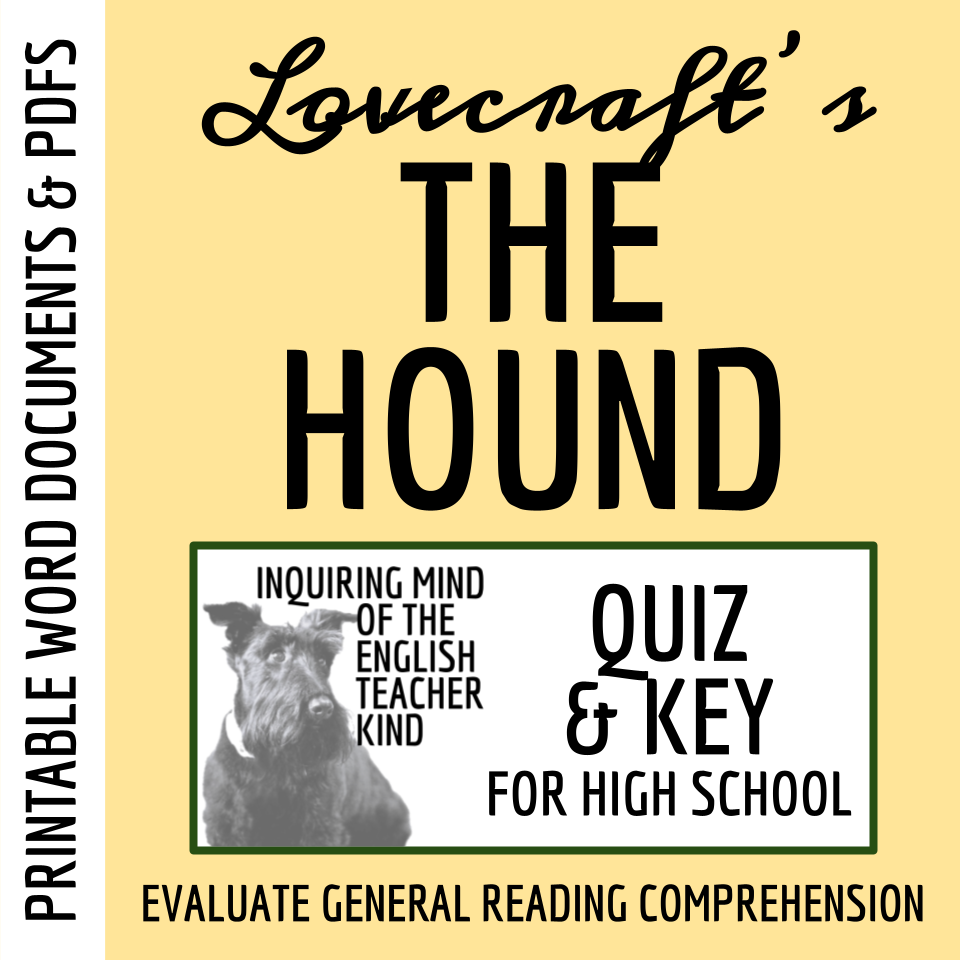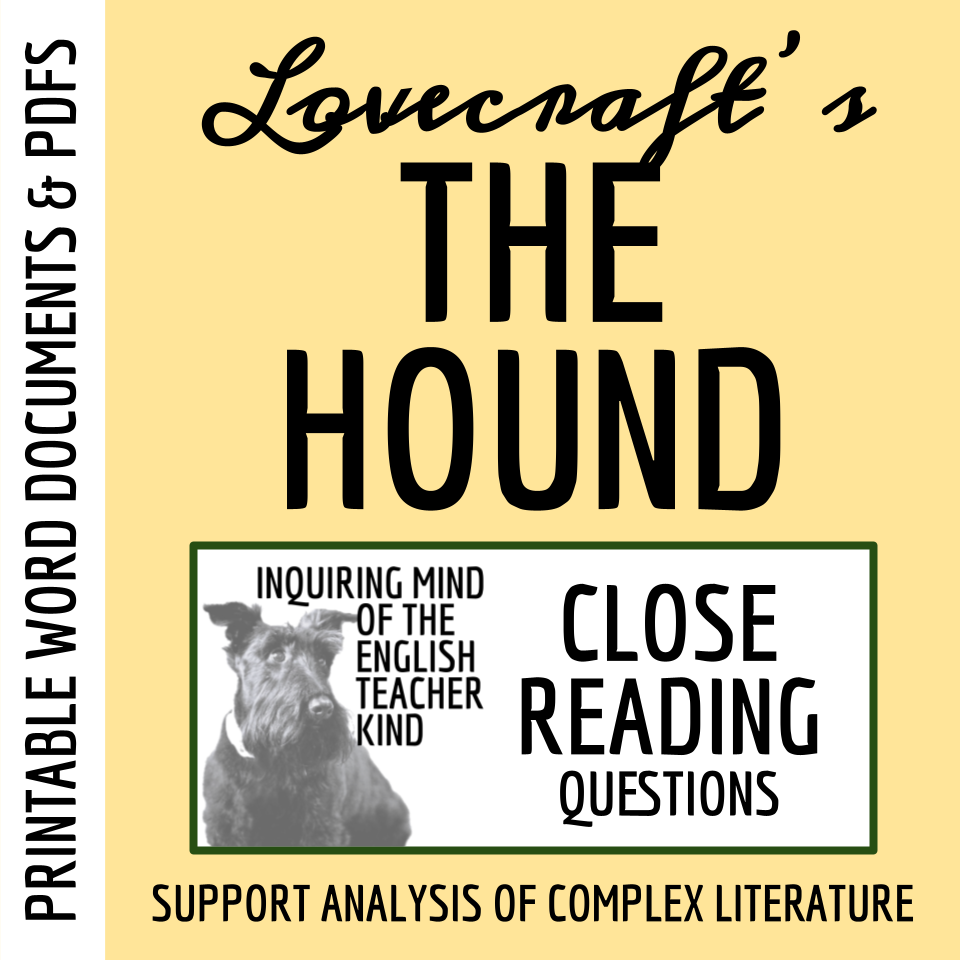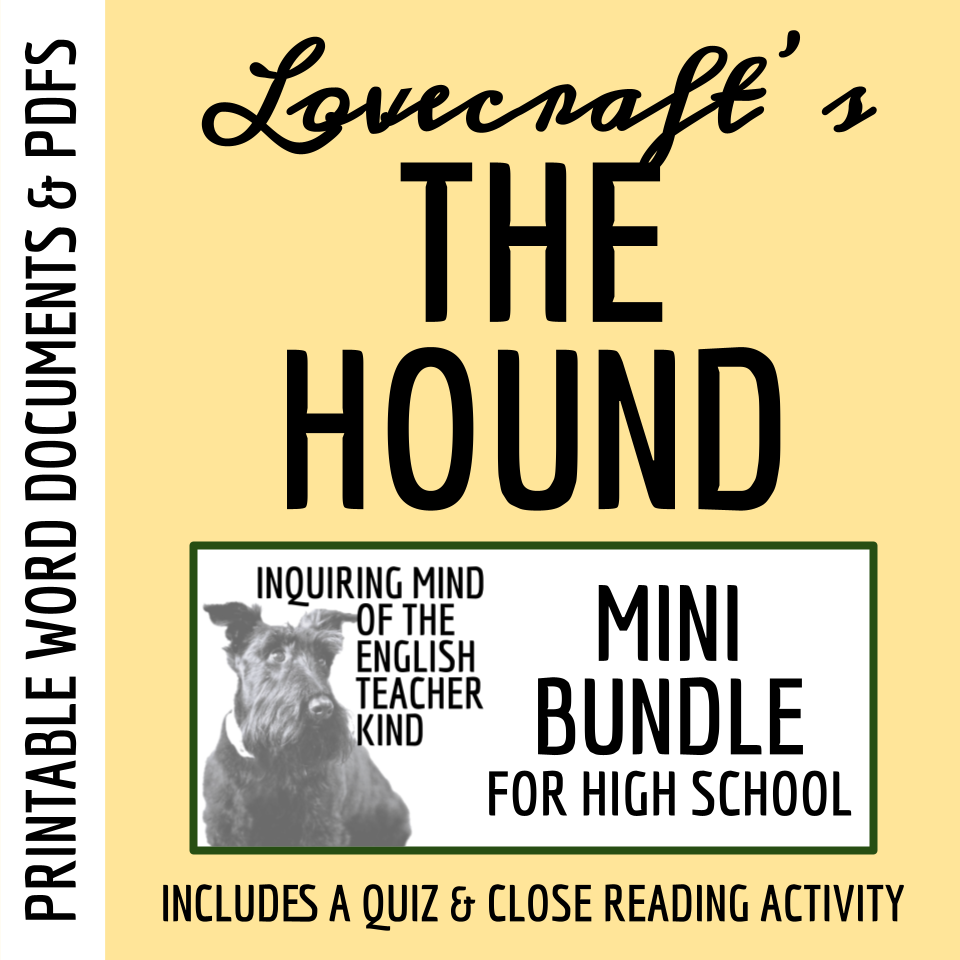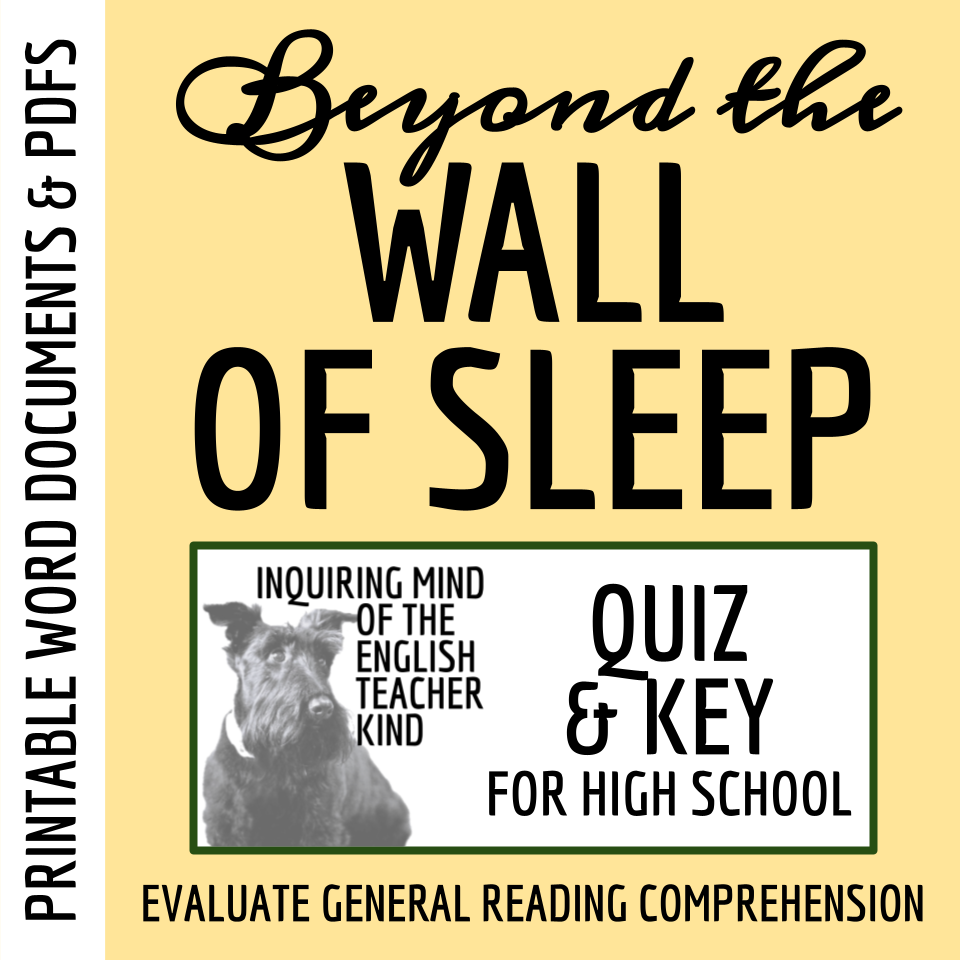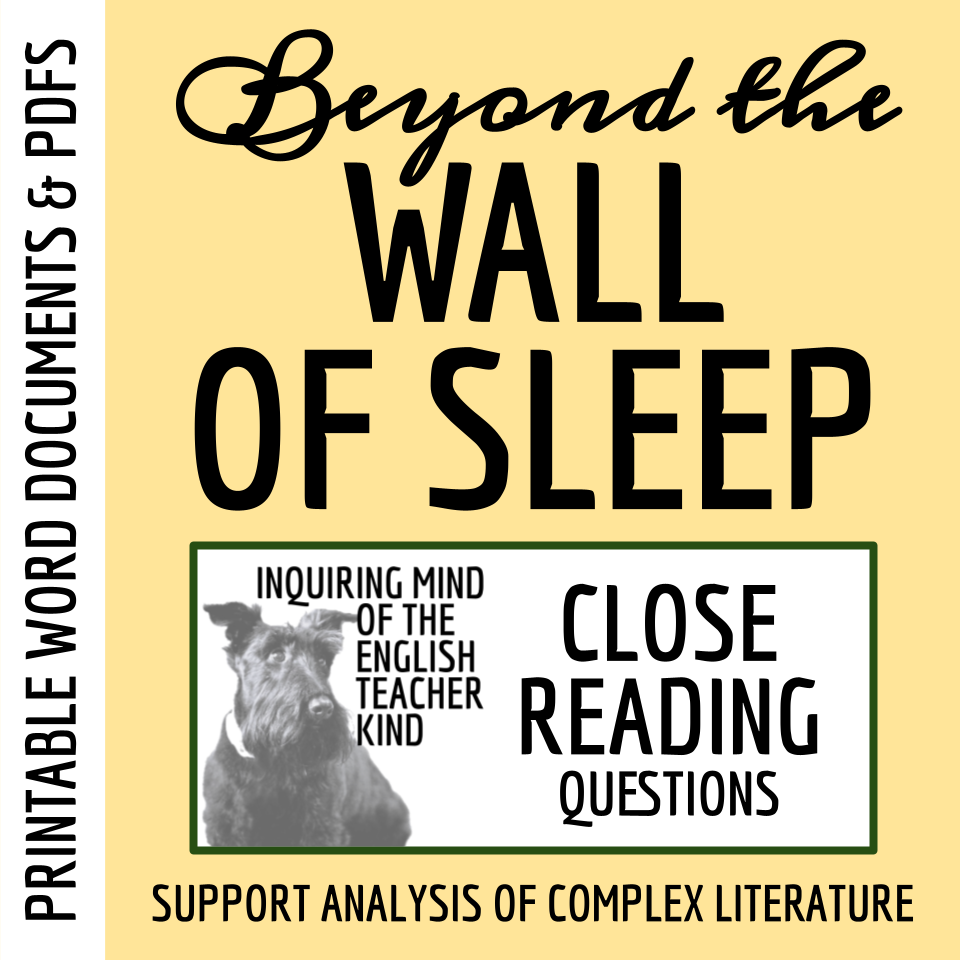Details
Pages
99+ Pages
Subject
ELA, Literature & Poetry, Classic Literature
Product
Digital
Grade
9th, 10th, 11th, 12th
Resource Type
Assessments, Guided Reading, Worksheets
Description
his bundle of 31 editable close reading exercises encourages purposeful reading, improved comprehension, and analysis of Harper Lee's To Kill a Mockingbird. Students will apply knowledge of literary devices, analyze character motivations and transformations, support claims by discerning relevant textual evidence, draw logical inferences, define complex vocabulary in context, make their engagement with the text visible, and much more. More than 240 higher order thinking questions are included, as are answer keys for each resource. Materials are delivered as Word Documents and PDFs. Information on each resource follows.
Ch. 1 Close Reading. By engaging in this exercise, students will:
Analyze the narrator's language to discern ancestral background of the Finch family
Analyze an excerpt to discern the significance of a given detail
Draw logical inferences about character development based on context clues provided by the author
Analyze the author's word choices to determine the meanings of complex words and phrases in context, taking into consideration both denotative definitions and connotative associations
Analyze how the author's word choices create certain effects such as mystery or suspense
Analyze metaphorical language to discern the most logical intended meaning
Ch. 2 Close Reading. By engaging in this exercise, students will:
Analyze Miss Caroline's characterization to draw logical inferences about her relationship with her students specifically and the community of Maycomb in general
Analyze Miss Caroline's characterization to discern her professional motivations
Analyze Walter Cunningham's characterization to draw logical inferences about his internal state
Analyze the author's word choices to determine the meanings of complex words and phrases in context, taking into consideration both denotative definitions and connotative associations
Analyze an excerpt to discern the significance of a given detail
Ch. 3 Close Reading. By engaging in this exercise, students will:
Analyze how Walter Cunningham's actions contribute to his characterization
Discern the meaning of complex vocabulary and phrases in context, taking into consideration both denotative definitions and connotative associations.
Identify the best synonym to replace a word or phrase without changing the excerpt's fundamental meaning
Demonstrate knowledge of comma and punctuation rules, especially as they apply to writing dialogue
Analyze the author's phrasing to discern her intended effect upon the reader
Apply knowledge of literary devices to the text
Analyze the details in a passage to draw a logical inference
Analyze an excerpt to determine its tone
Ch. 4 Close Reading. By engaging in this exercise, students will:
Analyze how the author's choice of words convey meaning
Discern the meaning of complex vocabulary and phrases in context, taking into consideration both denotative definitions and connotative associations
Analyze an excerpt to determine its significance to the plot
Apply knowledge of situational irony to the text
Isolate false statements from factual ones
Analyze the intended meaning of metaphorical language
Apply knowledge of allusion to the text
Analyze Atticus's behavior to draw a reasonable inference
Apply knowledge of personification to the text
Ch. 5 Close Reading. By engaging in this exercise, students will:
Analyze the interactions between Maudie Atkinson and Scout to draw a reasonable inference about the nature of their relationship
Discern the meaning of complex vocabulary and phrases in context, taking into consideration both denotative definitions and connotative associations
Discern the object of Maudie Atkinson's sympathy in the context of an excerpt
Identify the best textual evidence that conveys the origin of Maudie Atkinson's interest in gardening
Apply knowledge of hyperbole to the text
Analyze Atticus's statements to infer his intent
Ch. 6 Close Reading. By engaging in this exercise, students will:
Discern the meaning of complex vocabulary and phrases in context, taking into consideration both denotative definitions and connotative associations
Apply knowledge of literary devices (dialect, simile, and dramatic irony) to the text
Discern the most accurate interpretation of the author's phrasing
Analyze how the author's phrasing contributes to the characterization of Jem
Analyze the significance of a particular excerpt
Analyze Jem's behavior to draw a reasonable inference about his internal state
Ch. 7 Close Reading. By engaging in this exercise, students will:
Discern the most accurate interpretation of the author's phrasing
Analyze Jem's struggle to make sense of a confusing situation
Discern the meaning of complex vocabulary and phrases in context, taking into consideration both denotative definitions and connotative associations
Apply knowledge of literary devices (foreshadowing, slang, and situational irony) to the text
Consider Scout's reasons for distancing herself from her brother
Ch. 8 Close Reading. By engaging in this exercise, students will:
Analyze Atticus's comments to Jem to discern his concern over the snowman in the yard
Discern the meaning of complex vocabulary and phrases in context, taking into consideration both denotative definitions and connotative associations
Analyze given details to draw logical inferences about the weather's effect on combating the house fire
Apply knowledge of literary devices (simile and situational irony)
Identify what the text says explicitly as well as implicitly
Ch. 9 Close Reading. By engaging in this exercise, students will:
Identify what the text says explicitly as well as implicitly about Scout's behavior
Identify what the text says explicitly as well as implicitly about Atticus's reasoning for not using offensive language
Analyze Scout's motivations for faking illness
Isolate factual statements from false statements
Identify the context for a particular excerpt
Analyze a character's dialogue to infer intent
Apply knowledge of metaphorical language to the text
Discern the meaning of complex vocabulary and phrases in context, taking into consideration both denotative definitions and connotative associations
Ch. 10 Close Reading. By engaging in this exercise, students will:
Analyze the relationship between Scout and Atticus at this point in the novel
Discern the meaning of complex vocabulary and phrases in context, taking into consideration both denotative definitions and connotative associations.
Identify what the text says explicitly as well as implicitly about killing mockingbirds
Identify what Scout means when she refers to a "generous target"
Draw a logical inference about a character in the context of a given passage
Ch. 11 Close Reading. By engaging in this exercise, students will:
Discern the most accurate interpretation of Mrs. Dubose's criticisms of Atticus
Discern the most accurate interpretation of Mrs. Dubose's criticisms of the Finch family more broadly
Analyze the author's craft to draw a logical inference about Jem's internal state
Apply knowledge of situational irony to the text
Discern the meaning of complex vocabulary and phrases in context, taking into consideration both denotative definitions and connotative associations
Identify what the text says both explicitly and implicitly about Jessie
Isolate factual statements from false statements
Draw personal connections to Jem, using logical reasoning to make inferences about his concerns
Argue whether Jem feels guilty for his treatment of Scout
Cite relevant textual evidence in support of claims
Write with clarity, logic, and precision
Ch. 12 Close Reading. By engaging in this exercise, students will:
Apply knowledge of coordinating conjunctions, selecting the most appropriate conjunction to join two sentences in context
Discern the most logical interpretation of an excerpt
Analyze the author's word choices and phrasing to determine intent
Apply knowledge of literary devices (imagery and theme) to the text
Analyze an excerpt to discern its significance
Analyze a passage to discern tone in context
Discern the meaning of complex vocabulary and phrases in context, taking into consideration both denotative definitions and connotative associations
Analyze context clues to articulate how Calpurnia is characterized, citing textual evidence in support of claims
Write with clarity, logic, and precision
Ch. 13 Close Reading. By engaging in this exercise, students will:
Analyze the author's word choices and phrasing to discern what she means explicitly and implicitly about Aunt Alexandra
Draw reasonable inferences about Jem's thinking in terms of how he perceives Aunt Alexandra
Discern the meaning of complex vocabulary and phrases in context, taking into consideration both denotative definitions and connotative associations
Consider synonyms that may replace a given word or phrase without changing the original fundamental meaning
Isolate factual statements from false statements
Ch. 14 Close Reading. By engaging in this exercise, students will:
Identify what the text says both explicitly and implicitly
Discern the meaning of complex vocabulary and phrases in context, taking into consideration both denotative definitions and connotative associations
Discern the most accurate interpretation of a character's remarks
Draw logical inferences in context
Discern the intended effect of the author's language upon the reader
Apply knowledge of literary devices (foreshadowing) to the text
Identify the significance of a given detail
Ch. 15 Close Reading. By engaging in this exercise, students will:
Articulate what the text states explicitly and implicitly
Explain the significance of a given detail
Write with clarity, logic, and precision
Cite relevant textual evidence in support of claims
Identify the factors that contributed to the "placid week" preceding the mob incident
Analyze what the fact that "Jem would struggle...through the speeches of Henry W. Grady" suggests about his character development
Analyze how complex characters interact
Explore the shift in tone once Scout approaches Mr. Cunningham
Demonstrate understanding of the literary device paradox
Analyze Mr. Underwood's values set
Articulate a significant misunderstanding Atticus has about his own community
Explore how Atticus demonstrates courage
Identify and explain an example of dramatic irony
Ch. 16 Close Reading. By engaging in this exercise, students will:
Draw logical inferences about Scout's dynamic nature in context
Draw logical inferences about Aunt Alexandra's concerns for her family's reputation
Apply knowledge of figurative language to the text, identifying the most logical interpretation of a metaphorical phrase
Apply knowledge of hyperbole to the text
Identify what Aunt Alexandra states explicitly about being a "disgrace to the family"
Identify what Maudie Atkinson states explicitly about why she refuses to attend the trial
Discern the meaning of complex vocabulary and phrases in context, taking into consideration both denotative definitions and connotative associations
Analyze the significance of the kids' placement on the balcony
Ch. 17 Close Reading. By engaging in this exercise, students will:
Discern the most accurate interpretation of the author's phrasing
Analyze the characterization of Jem and Scout to discern the most accurate statement about their internal states
Analyze the author's craft with emphasis on the intended effect of metaphorical language (comparing Bob to 'a red little rooster")
Apply knowledge of verbal irony to the text
Write with clarity, logic, and precision
Ch. 18 Close Reading. By engaging in this exercise, students will:
Analyze the interactions between Atticus and Mayella to draw logical inferences about Mayella's personal history
Discern the meaning of complex vocabulary and phrases in context, taking into consideration both denotative definitions and connotative associations
Analyze Bob Ewell's nonverbal communication to draw logical inferences about his intent
Analyze Atticus Finch's language to draw a logical inference about his intent
Isolate false statements from factual ones
Ch. 19 Close Reading. By engaging in this exercise, students will:
Explore character motivations and modes of thinking
Articulate why Tom Robinson hesitates to answer Mr. Gilmer's question
Analyze Mr. Gilmer's language to discern its racial implications
Define complex words in context
Verify interpretations of language using reference materials such as a dictionary or thesaurus
Examine plot developments from a historical perspective
Analyze the author's application of indirect characterization
Explore the community's influence on Scout's way of thinking about the trial
Articulate why Dill relates to Tom
Identify and explain an example of situational irony
Discern the function of a given passage
Ch. 20 Close Reading. By engaging in this exercise, students will:
Identify the object of Atticus's pity in context
Analyze the author's phrasing in a cultural context (the "rigid and time-honored code of our society")
Analyze how the author's phrasing contributes to the characterization of Mayella
Identify the object of Atticus's scrutiny in context
Identify what the text states explicitly about Atticus's beliefs pertaining to U.S. courts
Ch. 21 Close Reading. By engaging in this exercise, students will:
Demonstrate understanding of Atticus's feelings about his children attending the trial
Analyze Jem's remarks to Atticus to discern his youthful ignorance of systematic racism
Discern the meaning of complex vocabulary and phrases in context, taking into consideration both denotative definitions and connotative associations
Analyze Reverend Sykes' remarks to Jem in order to infer his motivations
Identify what the text states both explicitly and implicitly
Analyze the importance of Reverend Sykes' instructions to Scout following the trial's conclusion
Ch. 22 Close Reading. By engaging in this exercise, students will:
Discern the meaning of complex vocabulary and phrases in context, taking into consideration both denotative definitions and connotative associations
Identify what the text states both explicitly and implicitly
Draw logical inferences in the context of a given passage
Analyze character actions and statements to discern character intent
Isolate factual statements from false statements
Analyze figurative language to discern deeper meaning
Consider the thematic significance of the interaction between Jem and Maudie Atkinson (a belief that there is hope for positive change in the American justice system, although that change will probably happen slowly)
Ch. 23 Close Reading. By engaging in this exercise, students will:
Discern the meaning of complex vocabulary and phrases in context, taking into consideration both denotative definitions and connotative associations.
Analyze Scout's dialogue to make a logical inference about Atticus's parenting
Apply knowledge of literary devices including metaphor
Identify textual evidence in support of the claim that Jem is a dynamic character
Explore the internal conflict that exists within Jem
Connect a portion of a given passage to the content of a previous chapter
Analyze how complex characters interact
Ch. 24 Close Reading. By engaging in this exercise, students will:
Apply knowledge of literary devices (situational irony and simile) to the text
Discern the meaning of complex vocabulary and phrases in context, taking into consideration both denotative definitions and connotative associations
Identify what the text states both explicitly and implicitly
Analyze Scout's characterization to draw a logical inference in context
Analyze a passage to discern its significance toward advancing the plot
Isolate factual statements from false statements
Analyze Grace Merriweather's characterization to draw a logical inference in context
Analyze a passage to discern its tone
Ch. 25 Close Reading. By engaging in this exercise, students will:
Analyze an excerpt to draw rational inferences
Discern the most logical interpretation of a particular excerpt
Analyze an excerpt to discern its significance to the plot
Analyze Mr. Underwood's actions to discern his personal motivations
Analyze Bob Ewell's remarks to predict his future behaviors, possibly addressing foreshadowing in the process
Discern the meaning of complex vocabulary and phrases in context, taking into consideration both denotative definitions and connotative associations
Isolate factual statements from false statements
Apply knowledge of literary devices (metaphor) to the text
Write with clarity, logic, and precision
Cite textual evidence in support of claims
Ch. 26 Close Reading. By engaging in this exercise, students will:
Apply knowledge of various literary devices to passages in the text
Discern the intended effect of figurative language
Articulate the significance of Atticus's re-election
Discern the most accurate paraphrasing of a detail in a given passage
Analyze how complex characters interact
Discern author's intent
Analyze the text from an historical context
Discern the tone of a given passage.
Ch. 27 Close Reading. By engaging in this exercise, students will:
Address Scout's youthful misconception of "two minor changes" in Maycomb
Analyze an excerpt to discern its significance to the plot
Draw a logical inference about Atticus's remarks, which allude to the Supreme Court of the United States
Conduct brief research on Halloween during the Great Depression, draw historical parallels with the text, and articulate those connections clearly and logically
Write with clarity, logic, and precision
Analyze the author's craft to discern her intent
Identify what the text states explicitly and implicitly
Apply knowledge of foreshadowing to the text, with emphasis on how Miss Tutti and Miss Frutti's deafness contribute to the plot
Analyze an excerpt to discern its tone in context
Ch. 28 Close Reading. By engaging in this exercise, students will:
Explain the significance of a given detail
Write with clarity, logic, and precision
Discern the meaning of complex vocabulary and phrases in context, taking into consideration both denotative definitions and connotative associations
Analyze a Dr. Reynolds's remarks to discern tone in context
Analyze the author's craft to discern the intended effect
Apply knowledge of literary devices (hyperbole) to the text
Analyze Dr. Reynolds's comments to Scout to discern and articulate his intent
Ch. 29 Close Reading. By engaging in this exercise, students will:
Apply knowledge of various literary devices to passages in the text (idiom, metaphor, personification, assonance)
Discern the meaning of a given word or phrase
Discern a character's intent
Analyze Boo Radley's physical characteristics to articulate the author's intent
Analyze the author's craft
Write with clarity and precision
Ch. 30 Close Reading. By engaging in this exercise, students will:
Examine the context of a given passage
Analyze character dialogue to discern meaning and intent
Discern the meaning of complex vocabulary and phrases in context, taking into consideration both denotative definitions and connotative associations
Analyze an excerpt to discern its significance
Ch. 31 Close Reading. By engaging in this exercise, students will:
Discern the tone of a character's remarks
Use context to determine the symbolism of a tree in context
Apply knowledge of various literary devices to passages in the text (personification)
Discern a character's intent
Discern the author's intent
Cite evidence to support the claim that Scout's world perspective has matured
Analyze the author's craft
Make a logical inference about why Alexandra would be proud of Scout
Write with clarity and precision
Ch. 1 Close Reading. By engaging in this exercise, students will:
Analyze the narrator's language to discern ancestral background of the Finch family
Analyze an excerpt to discern the significance of a given detail
Draw logical inferences about character development based on context clues provided by the author
Analyze the author's word choices to determine the meanings of complex words and phrases in context, taking into consideration both denotative definitions and connotative associations
Analyze how the author's word choices create certain effects such as mystery or suspense
Analyze metaphorical language to discern the most logical intended meaning
Ch. 2 Close Reading. By engaging in this exercise, students will:
Analyze Miss Caroline's characterization to draw logical inferences about her relationship with her students specifically and the community of Maycomb in general
Analyze Miss Caroline's characterization to discern her professional motivations
Analyze Walter Cunningham's characterization to draw logical inferences about his internal state
Analyze the author's word choices to determine the meanings of complex words and phrases in context, taking into consideration both denotative definitions and connotative associations
Analyze an excerpt to discern the significance of a given detail
Ch. 3 Close Reading. By engaging in this exercise, students will:
Analyze how Walter Cunningham's actions contribute to his characterization
Discern the meaning of complex vocabulary and phrases in context, taking into consideration both denotative definitions and connotative associations.
Identify the best synonym to replace a word or phrase without changing the excerpt's fundamental meaning
Demonstrate knowledge of comma and punctuation rules, especially as they apply to writing dialogue
Analyze the author's phrasing to discern her intended effect upon the reader
Apply knowledge of literary devices to the text
Analyze the details in a passage to draw a logical inference
Analyze an excerpt to determine its tone
Ch. 4 Close Reading. By engaging in this exercise, students will:
Analyze how the author's choice of words convey meaning
Discern the meaning of complex vocabulary and phrases in context, taking into consideration both denotative definitions and connotative associations
Analyze an excerpt to determine its significance to the plot
Apply knowledge of situational irony to the text
Isolate false statements from factual ones
Analyze the intended meaning of metaphorical language
Apply knowledge of allusion to the text
Analyze Atticus's behavior to draw a reasonable inference
Apply knowledge of personification to the text
Ch. 5 Close Reading. By engaging in this exercise, students will:
Analyze the interactions between Maudie Atkinson and Scout to draw a reasonable inference about the nature of their relationship
Discern the meaning of complex vocabulary and phrases in context, taking into consideration both denotative definitions and connotative associations
Discern the object of Maudie Atkinson's sympathy in the context of an excerpt
Identify the best textual evidence that conveys the origin of Maudie Atkinson's interest in gardening
Apply knowledge of hyperbole to the text
Analyze Atticus's statements to infer his intent
Ch. 6 Close Reading. By engaging in this exercise, students will:
Discern the meaning of complex vocabulary and phrases in context, taking into consideration both denotative definitions and connotative associations
Apply knowledge of literary devices (dialect, simile, and dramatic irony) to the text
Discern the most accurate interpretation of the author's phrasing
Analyze how the author's phrasing contributes to the characterization of Jem
Analyze the significance of a particular excerpt
Analyze Jem's behavior to draw a reasonable inference about his internal state
Ch. 7 Close Reading. By engaging in this exercise, students will:
Discern the most accurate interpretation of the author's phrasing
Analyze Jem's struggle to make sense of a confusing situation
Discern the meaning of complex vocabulary and phrases in context, taking into consideration both denotative definitions and connotative associations
Apply knowledge of literary devices (foreshadowing, slang, and situational irony) to the text
Consider Scout's reasons for distancing herself from her brother
Ch. 8 Close Reading. By engaging in this exercise, students will:
Analyze Atticus's comments to Jem to discern his concern over the snowman in the yard
Discern the meaning of complex vocabulary and phrases in context, taking into consideration both denotative definitions and connotative associations
Analyze given details to draw logical inferences about the weather's effect on combating the house fire
Apply knowledge of literary devices (simile and situational irony)
Identify what the text says explicitly as well as implicitly
Ch. 9 Close Reading. By engaging in this exercise, students will:
Identify what the text says explicitly as well as implicitly about Scout's behavior
Identify what the text says explicitly as well as implicitly about Atticus's reasoning for not using offensive language
Analyze Scout's motivations for faking illness
Isolate factual statements from false statements
Identify the context for a particular excerpt
Analyze a character's dialogue to infer intent
Apply knowledge of metaphorical language to the text
Discern the meaning of complex vocabulary and phrases in context, taking into consideration both denotative definitions and connotative associations
Ch. 10 Close Reading. By engaging in this exercise, students will:
Analyze the relationship between Scout and Atticus at this point in the novel
Discern the meaning of complex vocabulary and phrases in context, taking into consideration both denotative definitions and connotative associations.
Identify what the text says explicitly as well as implicitly about killing mockingbirds
Identify what Scout means when she refers to a "generous target"
Draw a logical inference about a character in the context of a given passage
Ch. 11 Close Reading. By engaging in this exercise, students will:
Discern the most accurate interpretation of Mrs. Dubose's criticisms of Atticus
Discern the most accurate interpretation of Mrs. Dubose's criticisms of the Finch family more broadly
Analyze the author's craft to draw a logical inference about Jem's internal state
Apply knowledge of situational irony to the text
Discern the meaning of complex vocabulary and phrases in context, taking into consideration both denotative definitions and connotative associations
Identify what the text says both explicitly and implicitly about Jessie
Isolate factual statements from false statements
Draw personal connections to Jem, using logical reasoning to make inferences about his concerns
Argue whether Jem feels guilty for his treatment of Scout
Cite relevant textual evidence in support of claims
Write with clarity, logic, and precision
Ch. 12 Close Reading. By engaging in this exercise, students will:
Apply knowledge of coordinating conjunctions, selecting the most appropriate conjunction to join two sentences in context
Discern the most logical interpretation of an excerpt
Analyze the author's word choices and phrasing to determine intent
Apply knowledge of literary devices (imagery and theme) to the text
Analyze an excerpt to discern its significance
Analyze a passage to discern tone in context
Discern the meaning of complex vocabulary and phrases in context, taking into consideration both denotative definitions and connotative associations
Analyze context clues to articulate how Calpurnia is characterized, citing textual evidence in support of claims
Write with clarity, logic, and precision
Ch. 13 Close Reading. By engaging in this exercise, students will:
Analyze the author's word choices and phrasing to discern what she means explicitly and implicitly about Aunt Alexandra
Draw reasonable inferences about Jem's thinking in terms of how he perceives Aunt Alexandra
Discern the meaning of complex vocabulary and phrases in context, taking into consideration both denotative definitions and connotative associations
Consider synonyms that may replace a given word or phrase without changing the original fundamental meaning
Isolate factual statements from false statements
Ch. 14 Close Reading. By engaging in this exercise, students will:
Identify what the text says both explicitly and implicitly
Discern the meaning of complex vocabulary and phrases in context, taking into consideration both denotative definitions and connotative associations
Discern the most accurate interpretation of a character's remarks
Draw logical inferences in context
Discern the intended effect of the author's language upon the reader
Apply knowledge of literary devices (foreshadowing) to the text
Identify the significance of a given detail
Ch. 15 Close Reading. By engaging in this exercise, students will:
Articulate what the text states explicitly and implicitly
Explain the significance of a given detail
Write with clarity, logic, and precision
Cite relevant textual evidence in support of claims
Identify the factors that contributed to the "placid week" preceding the mob incident
Analyze what the fact that "Jem would struggle...through the speeches of Henry W. Grady" suggests about his character development
Analyze how complex characters interact
Explore the shift in tone once Scout approaches Mr. Cunningham
Demonstrate understanding of the literary device paradox
Analyze Mr. Underwood's values set
Articulate a significant misunderstanding Atticus has about his own community
Explore how Atticus demonstrates courage
Identify and explain an example of dramatic irony
Ch. 16 Close Reading. By engaging in this exercise, students will:
Draw logical inferences about Scout's dynamic nature in context
Draw logical inferences about Aunt Alexandra's concerns for her family's reputation
Apply knowledge of figurative language to the text, identifying the most logical interpretation of a metaphorical phrase
Apply knowledge of hyperbole to the text
Identify what Aunt Alexandra states explicitly about being a "disgrace to the family"
Identify what Maudie Atkinson states explicitly about why she refuses to attend the trial
Discern the meaning of complex vocabulary and phrases in context, taking into consideration both denotative definitions and connotative associations
Analyze the significance of the kids' placement on the balcony
Ch. 17 Close Reading. By engaging in this exercise, students will:
Discern the most accurate interpretation of the author's phrasing
Analyze the characterization of Jem and Scout to discern the most accurate statement about their internal states
Analyze the author's craft with emphasis on the intended effect of metaphorical language (comparing Bob to 'a red little rooster")
Apply knowledge of verbal irony to the text
Write with clarity, logic, and precision
Ch. 18 Close Reading. By engaging in this exercise, students will:
Analyze the interactions between Atticus and Mayella to draw logical inferences about Mayella's personal history
Discern the meaning of complex vocabulary and phrases in context, taking into consideration both denotative definitions and connotative associations
Analyze Bob Ewell's nonverbal communication to draw logical inferences about his intent
Analyze Atticus Finch's language to draw a logical inference about his intent
Isolate false statements from factual ones
Ch. 19 Close Reading. By engaging in this exercise, students will:
Explore character motivations and modes of thinking
Articulate why Tom Robinson hesitates to answer Mr. Gilmer's question
Analyze Mr. Gilmer's language to discern its racial implications
Define complex words in context
Verify interpretations of language using reference materials such as a dictionary or thesaurus
Examine plot developments from a historical perspective
Analyze the author's application of indirect characterization
Explore the community's influence on Scout's way of thinking about the trial
Articulate why Dill relates to Tom
Identify and explain an example of situational irony
Discern the function of a given passage
Ch. 20 Close Reading. By engaging in this exercise, students will:
Identify the object of Atticus's pity in context
Analyze the author's phrasing in a cultural context (the "rigid and time-honored code of our society")
Analyze how the author's phrasing contributes to the characterization of Mayella
Identify the object of Atticus's scrutiny in context
Identify what the text states explicitly about Atticus's beliefs pertaining to U.S. courts
Ch. 21 Close Reading. By engaging in this exercise, students will:
Demonstrate understanding of Atticus's feelings about his children attending the trial
Analyze Jem's remarks to Atticus to discern his youthful ignorance of systematic racism
Discern the meaning of complex vocabulary and phrases in context, taking into consideration both denotative definitions and connotative associations
Analyze Reverend Sykes' remarks to Jem in order to infer his motivations
Identify what the text states both explicitly and implicitly
Analyze the importance of Reverend Sykes' instructions to Scout following the trial's conclusion
Ch. 22 Close Reading. By engaging in this exercise, students will:
Discern the meaning of complex vocabulary and phrases in context, taking into consideration both denotative definitions and connotative associations
Identify what the text states both explicitly and implicitly
Draw logical inferences in the context of a given passage
Analyze character actions and statements to discern character intent
Isolate factual statements from false statements
Analyze figurative language to discern deeper meaning
Consider the thematic significance of the interaction between Jem and Maudie Atkinson (a belief that there is hope for positive change in the American justice system, although that change will probably happen slowly)
Ch. 23 Close Reading. By engaging in this exercise, students will:
Discern the meaning of complex vocabulary and phrases in context, taking into consideration both denotative definitions and connotative associations.
Analyze Scout's dialogue to make a logical inference about Atticus's parenting
Apply knowledge of literary devices including metaphor
Identify textual evidence in support of the claim that Jem is a dynamic character
Explore the internal conflict that exists within Jem
Connect a portion of a given passage to the content of a previous chapter
Analyze how complex characters interact
Ch. 24 Close Reading. By engaging in this exercise, students will:
Apply knowledge of literary devices (situational irony and simile) to the text
Discern the meaning of complex vocabulary and phrases in context, taking into consideration both denotative definitions and connotative associations
Identify what the text states both explicitly and implicitly
Analyze Scout's characterization to draw a logical inference in context
Analyze a passage to discern its significance toward advancing the plot
Isolate factual statements from false statements
Analyze Grace Merriweather's characterization to draw a logical inference in context
Analyze a passage to discern its tone
Ch. 25 Close Reading. By engaging in this exercise, students will:
Analyze an excerpt to draw rational inferences
Discern the most logical interpretation of a particular excerpt
Analyze an excerpt to discern its significance to the plot
Analyze Mr. Underwood's actions to discern his personal motivations
Analyze Bob Ewell's remarks to predict his future behaviors, possibly addressing foreshadowing in the process
Discern the meaning of complex vocabulary and phrases in context, taking into consideration both denotative definitions and connotative associations
Isolate factual statements from false statements
Apply knowledge of literary devices (metaphor) to the text
Write with clarity, logic, and precision
Cite textual evidence in support of claims
Ch. 26 Close Reading. By engaging in this exercise, students will:
Apply knowledge of various literary devices to passages in the text
Discern the intended effect of figurative language
Articulate the significance of Atticus's re-election
Discern the most accurate paraphrasing of a detail in a given passage
Analyze how complex characters interact
Discern author's intent
Analyze the text from an historical context
Discern the tone of a given passage.
Ch. 27 Close Reading. By engaging in this exercise, students will:
Address Scout's youthful misconception of "two minor changes" in Maycomb
Analyze an excerpt to discern its significance to the plot
Draw a logical inference about Atticus's remarks, which allude to the Supreme Court of the United States
Conduct brief research on Halloween during the Great Depression, draw historical parallels with the text, and articulate those connections clearly and logically
Write with clarity, logic, and precision
Analyze the author's craft to discern her intent
Identify what the text states explicitly and implicitly
Apply knowledge of foreshadowing to the text, with emphasis on how Miss Tutti and Miss Frutti's deafness contribute to the plot
Analyze an excerpt to discern its tone in context
Ch. 28 Close Reading. By engaging in this exercise, students will:
Explain the significance of a given detail
Write with clarity, logic, and precision
Discern the meaning of complex vocabulary and phrases in context, taking into consideration both denotative definitions and connotative associations
Analyze a Dr. Reynolds's remarks to discern tone in context
Analyze the author's craft to discern the intended effect
Apply knowledge of literary devices (hyperbole) to the text
Analyze Dr. Reynolds's comments to Scout to discern and articulate his intent
Ch. 29 Close Reading. By engaging in this exercise, students will:
Apply knowledge of various literary devices to passages in the text (idiom, metaphor, personification, assonance)
Discern the meaning of a given word or phrase
Discern a character's intent
Analyze Boo Radley's physical characteristics to articulate the author's intent
Analyze the author's craft
Write with clarity and precision
Ch. 30 Close Reading. By engaging in this exercise, students will:
Examine the context of a given passage
Analyze character dialogue to discern meaning and intent
Discern the meaning of complex vocabulary and phrases in context, taking into consideration both denotative definitions and connotative associations
Analyze an excerpt to discern its significance
Ch. 31 Close Reading. By engaging in this exercise, students will:
Discern the tone of a character's remarks
Use context to determine the symbolism of a tree in context
Apply knowledge of various literary devices to passages in the text (personification)
Discern a character's intent
Discern the author's intent
Cite evidence to support the claim that Scout's world perspective has matured
Analyze the author's craft
Make a logical inference about why Alexandra would be proud of Scout
Write with clarity and precision
his bundle of 31 editable close reading exercises encourages purposeful reading, improved comprehension, and analysis of Harper Lee's To Kill a Mockingbird. Students will apply knowledge of literary devices, analyze character motivations and transformations, support claims by discerning relevant textual... more






